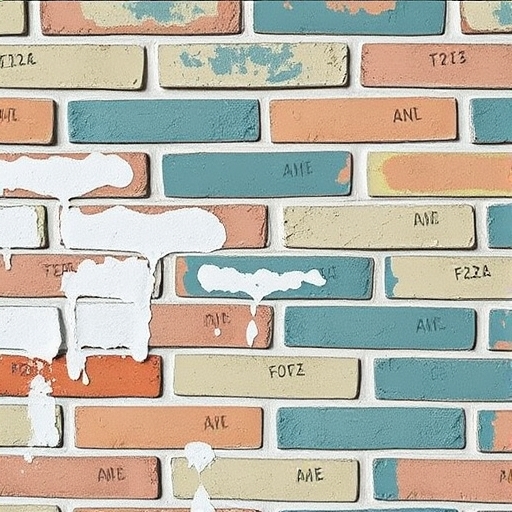How to Paint Brick: A Comprehensive Guide
Painting brick can be a transformative project that revitalizes your home’s exterior or interior. Whether you’re looking to refresh an old brick wall, enhance your home’s curb appeal, or simply change the color scheme, painting brick can yield stunning results. In this guide, we will cover everything you need to know about painting brick, from preparation to maintenance, along with tips, FAQs, and more.
Why Paint Brick?
Before diving into the process, let’s explore why you might want to paint brick:
-
- Aesthetic Appeal: Painting can modernize the look of your home.
- Protection: A good quality paint can protect the brick from moisture and weathering.
- Customization: You can choose any color to match your personal style or home decor.
- Increased Value: A well-done paint job can enhance your property value.
Tools and Materials Needed
To paint brick effectively, you will need the following tools and materials:
Tools
-
- Wire brush
- Pressure washer (optional)
- Paintbrushes (various sizes)
- Roller with a thick nap
- Painter’s tape
- Drop cloths
- Ladder (if painting high areas)
Materials
-
- Masonry cleaner
- Primer (specifically for masonry)
- Paint (exterior or interior masonry paint)
- Sealant (optional for added protection)
Step-by-Step Guide to Painting Brick
Step 1: Prepare the Surface
Cleaning the Brick
Before you start painting, it’s crucial to clean the brick surface to ensure proper paint adhesion.
-
- Use a Wire Brush: Remove loose mortar, dirt, and debris.
- Pressure Wash: If the brick is particularly dirty, a pressure washer can be effective. Make sure to allow it to dry completely.
- Masonry Cleaner: Apply a masonry cleaner according to the manufacturer’s instructions, scrubbing as needed.
Repairing the Brick
Inspect the brick for cracks or loose mortar. Fill in any gaps with a masonry repair compound and allow it to dry completely.
Step 2: Apply Primer
Priming is essential for achieving a smooth and long-lasting finish.
-
- Choose the Right Primer: Use a primer specifically designed for masonry.
- Apply with a Brush or Roller: Use a paintbrush for crevices and a roller for flat surfaces.
- Let it Dry: Follow the manufacturer’s instructions for drying times.
Step 3: Choose Your Paint
Select a high-quality masonry paint that is suitable for your project. Options include:
-
- Acrylic Latex Paint: Great for most applications, offers good durability.
- Elastomeric Paint: Ideal for areas with a lot of moisture, as it expands and contracts with temperature changes.
Step 4: Paint the Brick
Application Techniques
-
- Cut in Edges: Use a brush to paint along the edges and in crevices.
- Roll the Flat Areas: Use a roller for the larger flat areas for even coverage.
- Apply Multiple Coats: Depending on the color and type of paint, you may need two or more coats. Allow adequate drying time between coats.
Step 5: Seal the Paint (Optional)
For added protection, especially if the painted brick is exposed to the elements, consider applying a sealant.
-
- Choose a Compatible Sealant: Make sure it is suitable for masonry and compatible with your paint.
- Apply Evenly: Follow the manufacturer’s instructions for application.
Maintenance Tips for Painted Brick
Once you’ve painted your brick, it’s important to maintain it to keep it looking fresh:
- Regular Cleaning: Gently wash the surface with mild soap and water to remove dirt and grime.
- Inspect for Damage: Regularly check for peeling or cracking and address any issues immediately.
- Repaint as Needed: Depending on exposure to the elements, you may need to repaint every 5-10 years.
Frequently Asked Questions (FAQ)
Can you paint brick without primer?
While it is technically possible to paint brick without primer, it is not recommended. Primer helps the paint adhere better and improves the longevity of the paint job.
How long does painted brick last?
With proper preparation and maintenance, painted brick can last anywhere from 5 to 10 years before needing a repaint.
Is it better to paint or stain brick?
Both options have their pros and cons. Painting offers a wider range of colors and finishes, while staining allows the natural texture of the brick to show through. Your choice will depend on your aesthetic preference.
Can you use regular paint on brick?
Regular paint is not recommended for brick surfaces. Always use masonry-specific paint to ensure durability and adhesion.
Painting vs. Staining Brick
| Feature | Painting Brick | Staining Brick |
|---|---|---|
| Color Options | Vast range of colors | Limited to natural tones |
| Finish | Solid, opaque finish | Transparent or semi-transparent |
| Texture Visibility | Hides texture | Enhances natural texture |
| Longevity | 5-10 years with maintenance | 3-5 years, may require reapplication |
| Surface Preparation | Requires cleaning and priming | May require less prep |
| Maintenance | Regular cleaning, occasional repaint | Regular cleaning, may need touch-ups |
Conclusion
Painting brick can be a rewarding DIY project that enhances the beauty and protection of your home. By following the steps outlined in this guide, you can achieve a professional-looking finish that will last for years. Remember to choose the right tools, materials, and techniques to ensure the best results. Happy painting!

